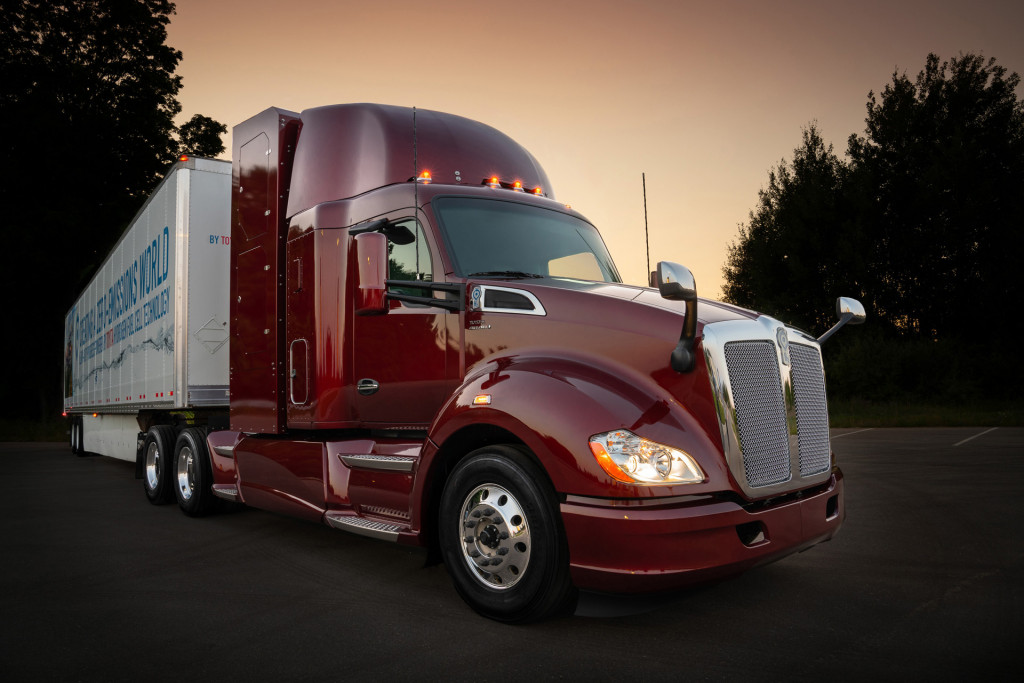The White House on Friday announced funding for seven regional hydrogen hubs, a major step toward scaling up hydrogen production for transportation uses.
The seven regional hubs—Mid-Atlantic, Appalachian, California, Gulf Coast, Heartland, Midwest, and Pacific Northwest—will get $7 billion in funding under the Bipartisan Infrastructure Law, according to a White House press release. The law designates a total of $8 billion for the hydrogen hub project, according to the U.S. Department of Energy, with the final $1 billion designated for coordinating end uses.
The White House also expects the regional hubs to "catalyze more than $40 billion in private investment and create tens of thousands of good-paying jobs—bringing the total public and private investment in hydrogen hubs to nearly $50 billion." Three of the seven have mandatory project labor agreements.

Toyota Project Portal 2.0 fuel cell-powered semi-trailer truck
Together, the hubs aim to produce more than three million metric tons of hydrogen per year, or nearly one-third of a 2030 production goal set by the Biden administration. This will eliminate 25 million metric tons of carbon dioxide emissions from end uses, the White House estimates. That will likely include trucking, where hydrogen has been pitched as an alternative to battery-electric commercial trucks.
However, the real-world environmental impact of the hubs will depend on how the hydrogen is produced. As the White House release underscores, hydrogen can be produced from solar, wind, or nuclear energy, or from biomass or natural gas with carbon capture. But at present about 96% of hydrogen is currently produced with fossil fuels or the equivalent plant- or bio-based fuels.
When the hydrogen production hubs were first proposed in 2021 experts expressed caution that they might be as dirty as coal, depending on the hydrogen production method. The White House claims "roughly two thirds" of the current project funding is associated with "green" hydrogen production from electrolysis.
Cost is also a major hurdle to the large-scale commercialization of hydrogen. The Energy Department has set the goal of reducing the cost of "clean hydrogen" 80% to $1 per one kilogram in one decade. It defines clean hydrogen as "hydrogen produced with a carbon intensity equal to or less than 2 kilograms of carbon dioxide-equivalent produced at the site of production per kilogram of hydrogen produced."
Forecasts for hydrogen cost reductions have been fairly optimistic. A 2020 IHS Markit study claimed that hydrogen from renewable energy could be cost-competitive by 2030. And the California Energy Commission in 2020 claimed that hydrogen for fuel-cell vehicles could reach price parity with gasoline by 2025.
Still, the planned investment in the seven hydrogen hubs makes investments in electric semi charging looks cheap. Tesla is reportedly seeking $100 million from the federal government for nine semi-truck charging stations. Daimler is planning a $650 million U.S. network that includes both charging and hydrogen options for big rigs.












